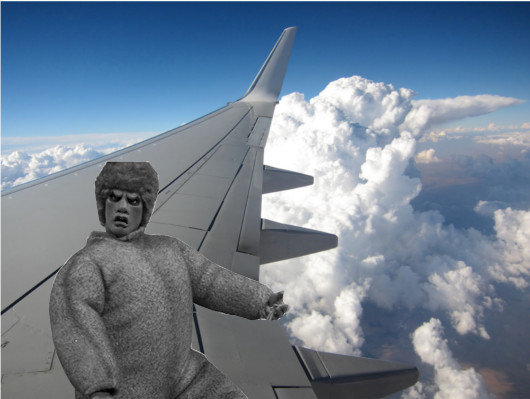Ever since the dawn of time, man has dreamed of soaring like a bird… or something like that. Granted, we can all soar through the skies for very little money these days, but we aren’t exactly doing it like a bird. That could change if one researcher is right.
People have long looked at birds flapping their wings and thought, “hey, if we just have wings like that, we could fly too.” Most of those people are dead. It didn’t work. You get guys who thought they could fly looking like this:

That is actually Clem Sohn, and he was more about gliding than flying. Still, he never made it to his 30th birthday when his parachute failed to open. It didn’t too long for people to figure out that fixed wings worked a lot better than a flapping wing, and that’s what we see today.
But as we all know, science is awesome. And so when I was flipping through my latest issue of George Washington University’s research magazine (that’s my alma mater), the work that Adam Wickenheiser is doing with his Smart Systems Laboratory to reduce turbulence caught my eye.
Granted, the work he is doing is for unmanned aircraft, and that makes sense because they fly lower to the ground and are more prone to turbulence. (Plus, there’s probably a lot more money for something that’s related to defense spending, unfortunately.) But I would bet this would have a commercial aircraft application if it works well.

On an aircraft today, you see big panels that sit on the wing – ailerons, flaps, slats, and spoilers. These do everything from helping to turn the aircraft to allowing for more stability at slower speeds. And yes, they can be used to alleviate the impact of turbulence on the airplane.
With all these control surfaces, aircraft manufacturers have worked hard to create gust suppression systems that help reduce turbulence today. There are sensors that look for air pressure and wind speed changes, something that would indicate turbulence. Then, computers calculate the best course of action to reduce
 the impact on the aircraft before it hits (ideally). That idea is great, but could a different wing structure make it work even better? Wickenheiser thinks going small could be the answer.
the impact on the aircraft before it hits (ideally). That idea is great, but could a different wing structure make it work even better? Wickenheiser thinks going small could be the answer.The new concept would have smaller panels in greater numbers on the wing, as you can see at right. As Wickenheiser says, the panels would “move in clusters that emulate a feathered wing.” So why is this any better?
Well it gives a more flexible structure to the wing. You could spread out the individual panels to help slow the airplane down. Or, the coolest part, is that it could open up panels to allow wind gusts to pass through that might cause turbulence otherwise. Naturally, this isn’t something that can be pilot controlled. It requires some very sensitive sensors in the wing to realize something is coming and react accordingly, but as we know, aircraft manufacturers are starting to do that today.
If this sounds like crazy awesome stuff that’s hard to do, I have no doubt that’s the case. It needs to get to the point where you have computers in the wing that are processing extremely quickly. But if it works, the result should be like walking on cobblestones, says Wickenheiser.
“If I step on an uneven piece of ground, I don’t really think about it. I just adjust automatically and walk over it.”
The current plan is to do more computer simulations over the next few months and then some actual wind tunnel tests later this summer. For more information, visit the Smart Systems Laboratory website.
[Original wing photo via Shutterstock]
[Feathered wing comparison photo via Adam Wickenheiser]

No comments:
Post a Comment